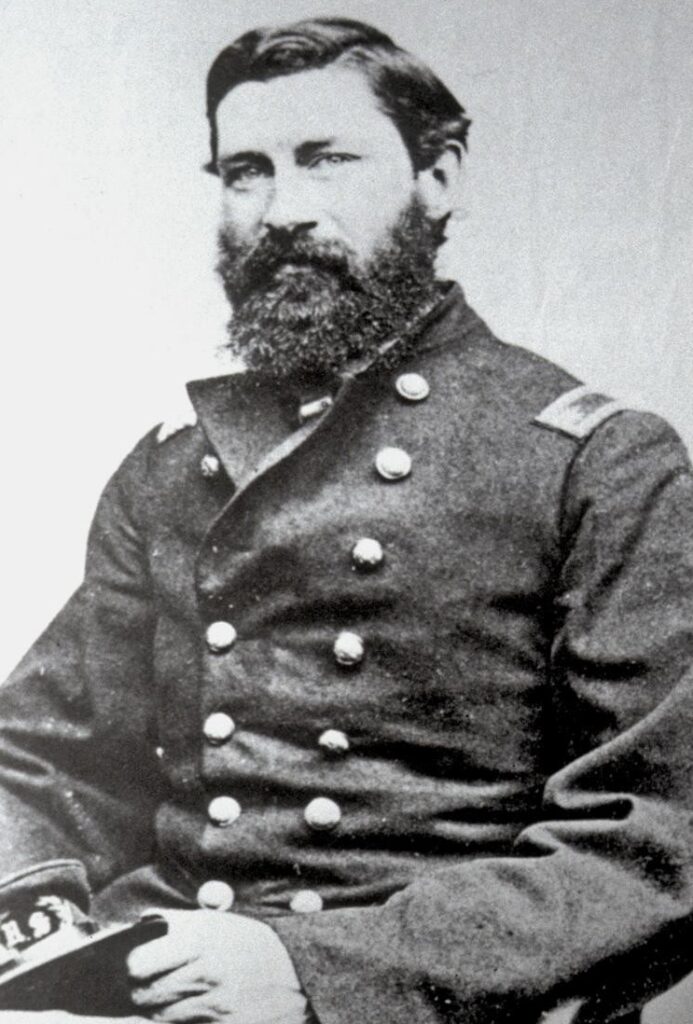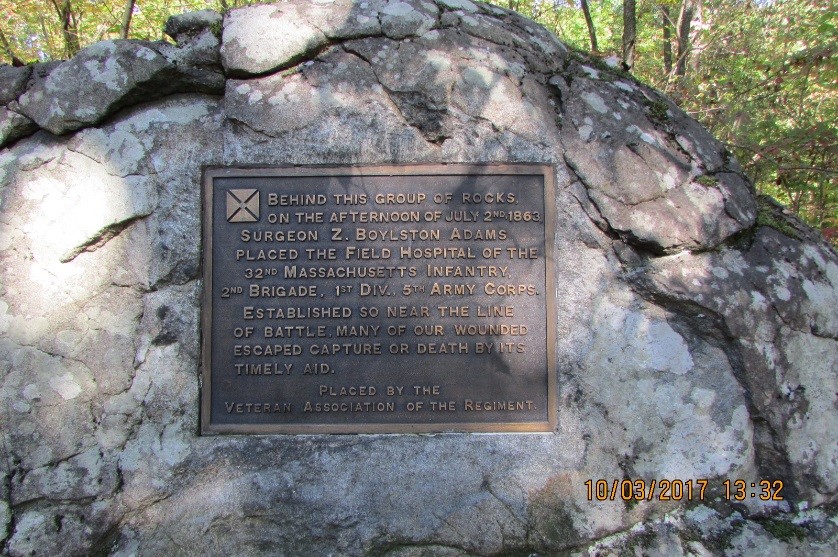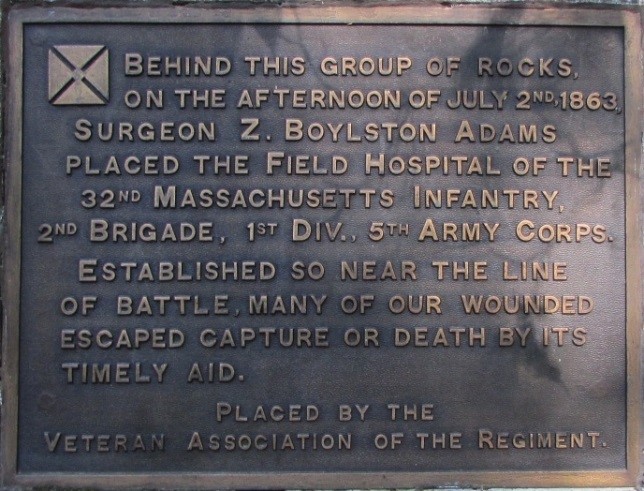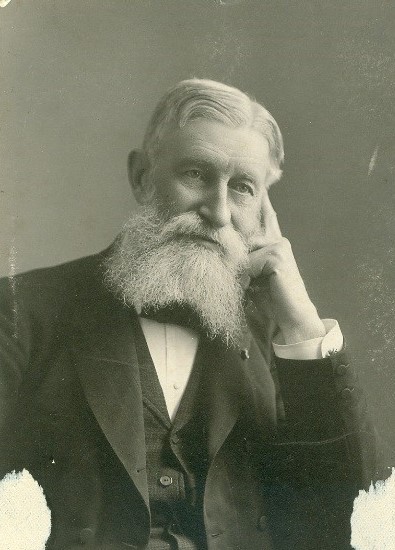Zabdiel Boylston Adams (1829-1902) was a medical doctor, an ardent abolitionist, and a surgeon and officer in the Union Army during the Civil War (1861-1865). He was born in Boston, Massachusetts on October 25, 1829, the son of Zabdiel Boylston Adams (1793-1855) and Sarah May Holland Adams. At the age of six, he began his educational career in the Boston Public Schools. He went on to the Latin School for college preparatory studies, and then at the age of sixteen, to Harvard College. During his junior year at Harvard, he was “rusticated” to Bowdoin College for playing a prank on the Chancellor. Following his graduation from Bowdoin in 1849, he entered Harvard Medical School. After completing his studies at Harvard in 1853, Zabdiel went to Paris for a year to further his medical education.

Upon returning to the Boston area, he was appointed resident physician to the Insane Hospital in Taunton, Massachusetts. After his father’s death in 1855, he left the Insane Hospital to practice medicine in Boston. Between 1855 and 1860, he was active in the formation of the Boston Society of Medical Improvement and the Boston Society for Medical Observation.
When news of the attack on Fort Sumter by Southern forces reached Boston, “Zab”, as he was known, volunteered for military service. In 1861, at the age of thirty-one, he was appointed as assistant surgeon to the 7th Massachusetts Volunteer Infantry. He was promoted to Surgeon of the 32nd Massachusetts in 1862. The day after the First Battle of Bull Run, Zab rode on an ambulance wagon where he observed that many wounded soldiers died while being transported long distances to the medical tents. During the battle at Gettysburg, he set up his operating tent fifty yards behind the 32nd Massachusetts’ battle lines near the bloody Wheatfields. It was at Gettysburg that he worked non-stop for two days and three nights. This caused him to be temporarily blinded. He subsequently was discharged from service on July 7, 1863. Zab was so determined to continue serving in the military, that when he recovered his eye sight, he re-enlisted as an officer as his vision was no longer good enough to be a surgeon.

It was during the Battle of the Wilderness that he was wounded and captured by the Confederates. In the Confederate camp, he received no medical care for his leg wound. When gangrene set in, amputation was recommended by Army surgeons. Zab refused and treated the wound himself by pouring nitric acid into it. In December 1864, he was discharged from the service due to this leg injury. Not one to sit idly by, he rejoined his regiment in February 1865, and took part in the Siege of Petersburg which led to the end of the Civil War. Upon his final discharge from service in July of 1865 he returned to Roxbury, Massachusetts to resume his medical practice.

While in Roxbury, he was a founding member of the Roxbury Society for Medical Improvement, a group for local doctors to share medical ideas and experiences, and journal articles. In July 1867, he resigned his membership in this Society and moved to Framingham. It is not clear why he chose to leave Roxbury, but perhaps the stress of work and city life became too much.
Zab replaced the recently deceased Dr. John W. Osgood who had a large medical practice in Framingham. Much to his chagrin, Zab could not interest the other doctors in the area to form a medical society similar to the one in Roxbury.
The 1870s were a time of great change for Zab as he settled into the life of a country doctor. He married Frances Ann Kidder of Sudbury on December 8, 1870. They bought the Weaver Estate on High Street in Framingham Centre in 1872. He was one of the first homeowners to install a furnace to heat the house and to use “town water” when he modernized the plumbing. The Adams’ had two children: a daughter Frances Boylston born in 1872 and a son Zabdiel Boylston born in 1875.
The civically minded Zab was instrumental in founding the Nobscot Fishing Club on Waushakum Pond, and in bringing a lecture series to Framingham called the Framingham Course. He also served as an elected member of the board of trustees of the Framingham Public Library.

Zab continued his civic activities into the 1880s. He served on the local Board of Health (1884-1890). While on this board, he promoted physical education in the schools. In an effort to prevent the spread of disease, he fought for the draining of one thousand acres of swampy land in South Framingham and the creation of sewerage filtration fields in the area of modern day Route 9. He was appointed as Medical Legal Examiner for the Eighth District in 1885, and was a councilor to the Massachusetts Medical Society. With the increase in population and industries such as Dennison Manufacturing Company and the Railroad, Zab saw the need for more local medical services. He was actively involved in the founding of the Framingham Hospital. He served on the hospital’s board of physicians from 1893-1895. In 1896, the hospital bought the Moses Little Estate on Evergreen Street to build a new building. Zab was instrumental in Framingham Hospital acquiring its first X-ray machine. It is said that Zab even x-rayed his own left leg in search of a Civil War bullet he believed to be still lodged there – no bullet was found. And finally his dream of a Framingham Medical Society came true with its founding in 1888.
Zabdiel Boylston Adams died at home on May 2, 1902 due to injuries he received from a fall from the Metropolitan Water Works Dam in Southborough. Zab was buried with full military honors in the Mount Auburn Cemetery, Cambridge, Massachusetts.
Facts
Five men in the family bore the name Zabdiel Boylston Adams – three were doctors.
His mother was a cousin of Louisa May Alcott’s mother.
His sister Annie’s portrait was painted by John Singer Sargent and hangs in the Boston Athenaeum.
He wrote 123 letters to his family from the Civil War battlefields
The only plaque at Gettysburg that honors the actions of a single surgeon celebrates Zab. This plaque can be found on the Wheatfield loop road, across from the Irish Brigade monument, and behind the 5th Michigan Infantry monument.
He served in the following Civil War battles: Yorktown, Williamsburg, Fair Oakes, Harrison’s Landing, Rappahannock, Antietam, Fredericksburg, 2nd Bull Run, Chancellorsville, Brandy Station, Gettysburg, Battle of the Wilderness and Siege of Petersburg.
“Rusticate” means to go to the country; to suspend a student from a university or college for specified time as punishment (Webster’s New World Dictionary of the American Language).
Bibliography
Ireland, Corydon. “Saga of a Civil War Surgeon.” Harvard Gazette 13 Feb. 2013. http://news.harvard.edu/gazette/story/2013/02/saga-of-a-civil-war-surgeon/. Accessed 28 July 2017.
Kelly, Howard A. and Walter Burrage, Walter L. American Medical Biographies. Norman Remington Co., 1920. https://en.wikisource.org/wiki/American_Medical_Biographies/Adams,_Zabdiel_Boylston . Accessed 28 July 2017.
Mitchell Adams “Dr. Zabdiel Boylston Adams: Surgeon and Soldier for the Union.” [Lecture series]. Boston Athenaeum, 3 Dec. 2013. https://vimeo.com/album/2279318/video/91438409. Accessed 28 July 2017.
Novotny, Deb. “A Boulder, a Plaque, and a Doctor.” Battlefield Dispatch, vol. 32, no. 1, Mar. 2014, p. 6+ http://www.gettysburgtourguides.org/members/newsletter/201403BD.pdf Accessed 5 Oct. 2017.
Peabody, Charles Newton. ZAB: Brevet Major Zabdiel Boylston Adams 1829-1902 Physician of Boston and Framingham. Francis A. Countway Library of Medicine, 1984.
“Rusticate.” Webster’s New World Dictionary of the American Language. World Publishing Co., 1962.
“Zabdiel Boylston Adams.” Ancestry.com https://www.ancestry.com/genealogy/records/zabdiel- boylston-adams 35405643 Accessed 28 July 2017.